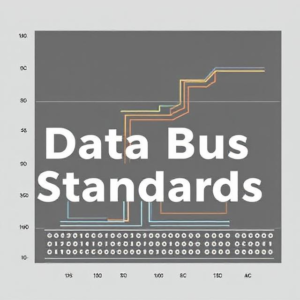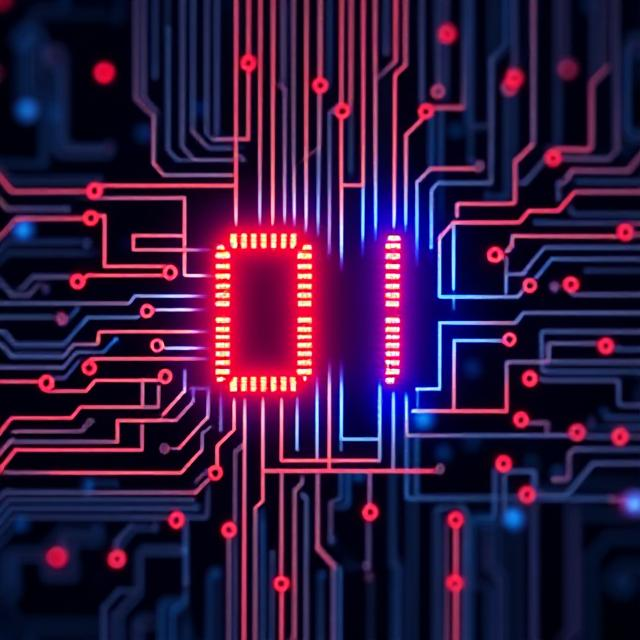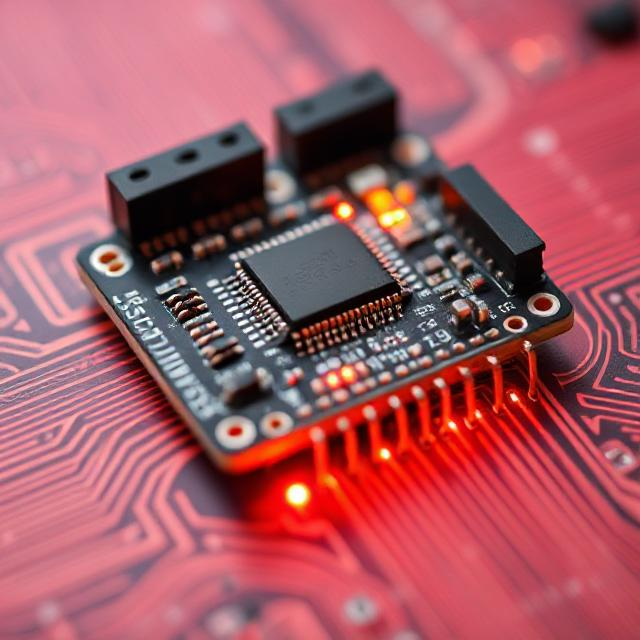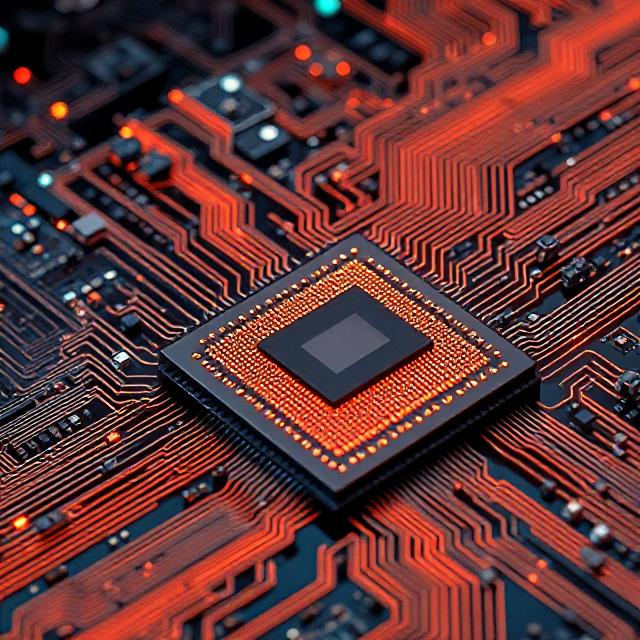The Evolution of Data Bus Standards (I2C, SPI, etc.): Explanation
In electronics, devices need to communicate with each other, whether it’s a microcontroller talking to a sensor, a memory chip, or a display. Data bus standards define the rules and ways in which data is sent between these devices. Over the years, various data bus standards have been developed to meet different needs, such as speed, complexity, or the number of devices in a system. Some of the most popular standards are I2C, SPI, and others.

1. What Is a Data Bus?
A data bus is simply a pathway or a set of connections used to transfer data between different parts of a system. Think of it like a highway where information can travel between devices.
- Serial Communication: The most common type of data bus used today is serial communication, which sends data one bit at a time along a single line.
- Parallel Communication: Earlier systems sometimes used parallel communication, where multiple bits were sent at once, but serial communication is more common now because it uses fewer wires and is easier to implement.
2. Why Do We Need Data Buses?
In a typical electronic system (like a microcontroller or computer), different components need to exchange information:
- Microcontroller → Sensors: A microcontroller needs to read data from a sensor.
- Microcontroller → Display: It might send data to a display to show some information.
- Memory → Microcontroller: The system may need to read data from memory chips or write to them.
Instead of connecting each device directly to every other device with a lot of individual wires (which would be messy and complicated), we use data buses. These buses allow multiple devices to share the same connection while still sending and receiving data properly.
3. Evolution of Data Bus Standards:
Over time, data bus standards have been developed to solve different problems, such as how fast data should travel, how many devices can be connected, and how complex the wiring can get. Let’s look at the most commonly used standards: I2C, SPI, and others.
a. I2C (Inter-Integrated Circuit):
- Developed by: Philips (now NXP) in the 1980s.
- How it works:
- I2C uses only two wires: one for data (SDA) and one for clock (SCL).
- It is a master-slave system, where one master device controls the bus and communicates with multiple slave devices.
- Devices are addressed using unique addresses, so the master knows which slave it’s talking to.
- It’s a serial protocol, meaning it sends one bit of data at a time, but it allows many devices to share the same bus.
- Why it was developed:
- In the early days of electronics, connecting many devices to a microcontroller needed a simpler way. I2C was designed to reduce the number of wires, simplify connections, and still support multiple devices on the same bus.
- Speed:
- I2C is relatively slow compared to some other data buses. It typically operates at speeds of 100 kbps or 400 kbps, though faster speeds are possible (up to 1 Mbps).
- Use cases:
- I2C is great for systems with multiple devices that need to communicate with a central controller. It’s commonly used for sensors, EEPROM memory, and displays in embedded systems.
b. SPI (Serial Peripheral Interface):
- Developed by: Motorola in the 1980s.
- How it works:
- SPI uses four wires:
- MOSI (Master Out Slave In) for data from master to slave.
- MISO (Master In Slave Out) for data from slave to master.
- SCK (Clock) to sync the data.
- SS (Slave Select) to choose which device is being talked to.
- It is also a master-slave protocol, but with full-duplex communication, meaning data can flow both ways at the same time.
- Unlike I2C, SPI does not use addresses. Each device is selected using the Slave Select (SS) line, and only one device is active at a time.
- SPI uses four wires:
- Why it was developed:
- SPI was designed for faster communication than I2C. It’s ideal for devices that need to transfer large amounts of data quickly, like memory chips, displays, or ADCs (Analog to Digital Converters).
- Speed:
- SPI is much faster than I2C, with speeds up to 10 Mbps or more.
- Use cases:
- SPI is used when speed is important, and a device needs to communicate with a microcontroller or other device quickly. It’s commonly used for SD cards, displays, sensors, and EEPROM.
c. UART (Universal Asynchronous Receiver-Transmitter):
- Developed by: Originally used in serial communication with computers.
- How it works:
- UART is a point-to-point communication standard that uses two wires: one for sending data (TX) and one for receiving data (RX).
- It is asynchronous, meaning it does not require a clock signal. Instead, the sender and receiver agree on a communication speed (baud rate) beforehand.
- Why it was developed:
- UART was designed for simple, long-distance communication between two devices. It’s often used for communication over RS-232 or other serial ports.
- Speed:
- Typical baud rates for UART range from 9600 to 115200 baud, though higher speeds are possible.
- Use cases:
- UART is commonly used in communication between computers, GPS modules, Bluetooth modules, and other serial devices.
d. CAN (Controller Area Network):
- Developed by: Bosch in the 1980s.
- How it works:
- CAN is a multi-master bus that allows multiple devices (nodes) to communicate with each other over a two-wire bus.
- It uses a more sophisticated protocol with error detection and message prioritization.
- CAN is typically used in automotive and industrial applications where reliable and robust communication is needed between many devices (e.g., sensors, actuators, and controllers).
- Speed:
- CAN operates at speeds up to 1 Mbps.
- Use cases:
- CAN is widely used in cars for connecting components like engine controllers, safety systems, and infotainment.
4. The Evolution in Data Bus Standards:
- Early Days (1980s): Simple, slow protocols like UART and I2C were developed to connect devices in embedded systems with minimal wiring.
- 1990s-2000s: As devices became more complex, faster communication methods like SPI and CAN emerged to meet the need for higher data rates and more reliable communication in automotive and industrial applications.
- Recent Developments: With the rise of IoT (Internet of Things) and faster processors, newer protocols like USB, Ethernet, and Wi-Fi are becoming more common for higher-speed, longer-distance communication in connected systems.
5. Advantages and Disadvantages of Each Standard:
| Standard | Advantages | Disadvantages |
|---|---|---|
| I2C | Simple wiring (2 wires), good for many devices | Slower speeds, limited distance |
| SPI | Faster than I2C, full-duplex communication | Requires more wires (4 wires), fewer devices |
| UART | Simple, long-distance communication | Only between two devices, no synchronization |
| CAN | Robust, reliable, good for many devices | More complex, not as fast as SPI |
6. Conclusion:
Data bus standards like I2C, SPI, UART, and CAN have evolved over time to meet the growing demands of different electronic applications. Each standard was designed with different priorities in mind—whether it’s simplicity, speed, robustness, or the ability to connect many devices together.
- I2C is great for simple, low-speed communication with many devices.
- SPI is preferred when high-speed communication between a master and a single or few devices is needed.
- UART is great for simple point-to-point communication.
- CAN is ideal for reliable communication in complex systems, like automotive electronics.











